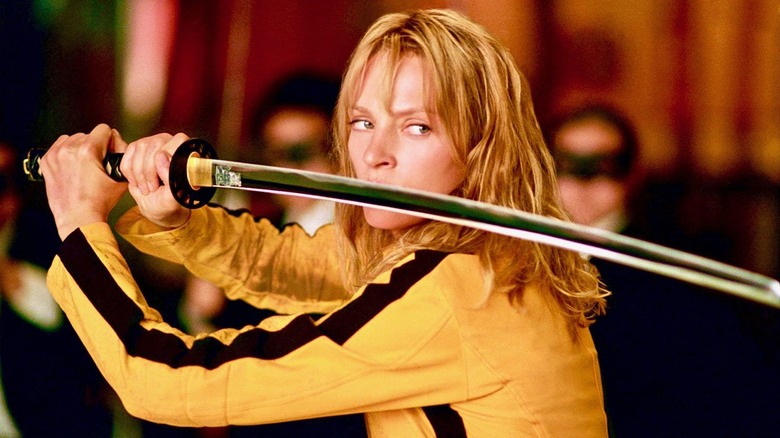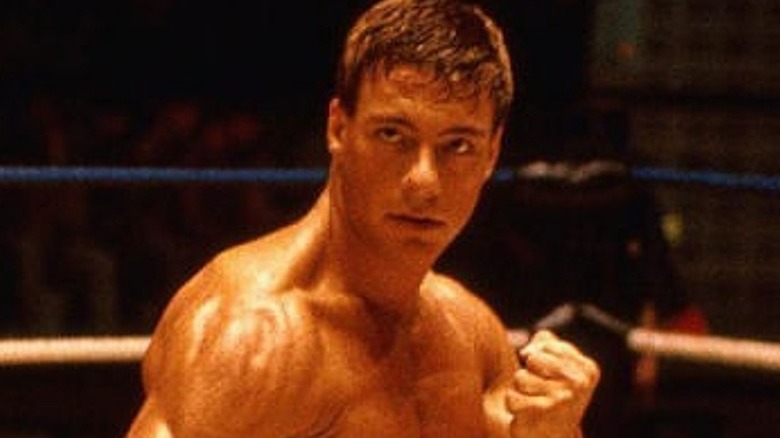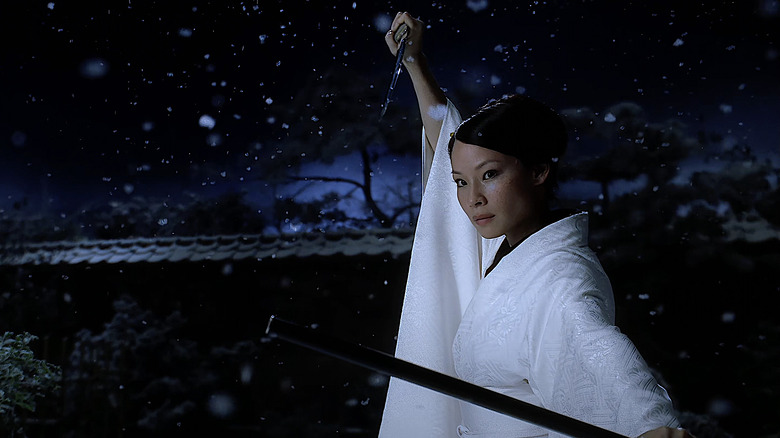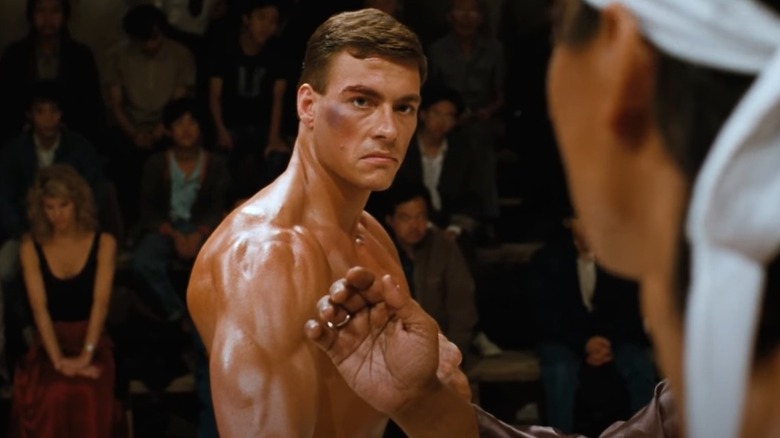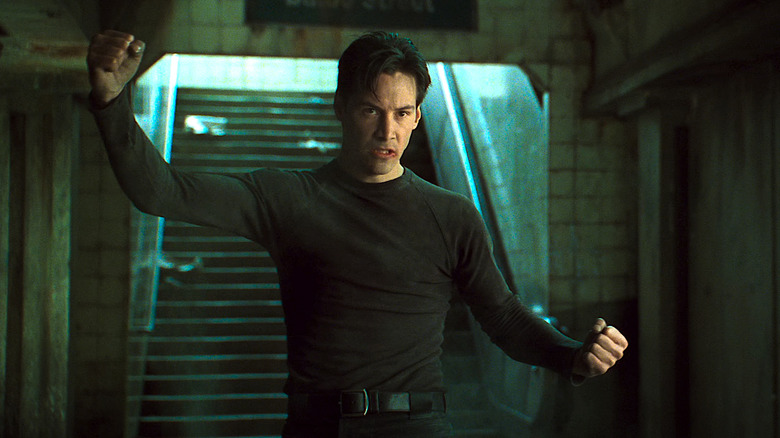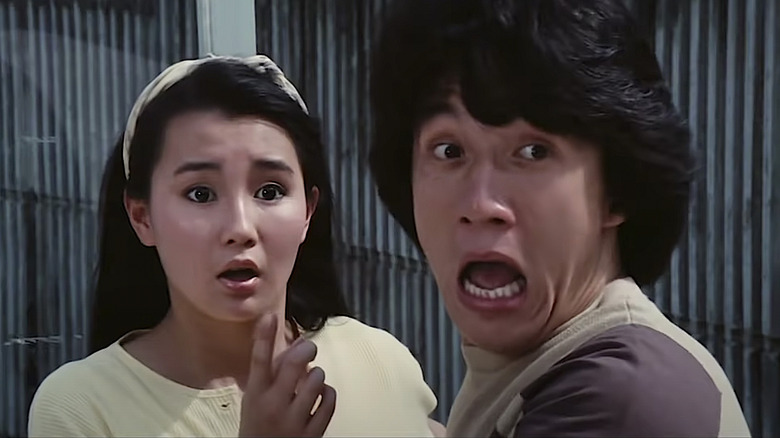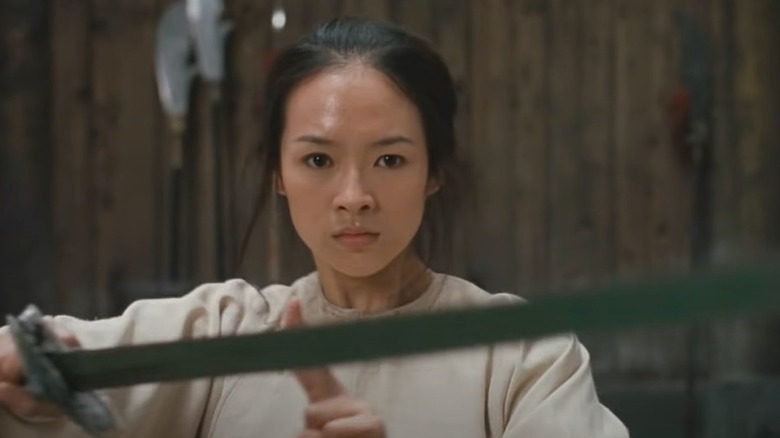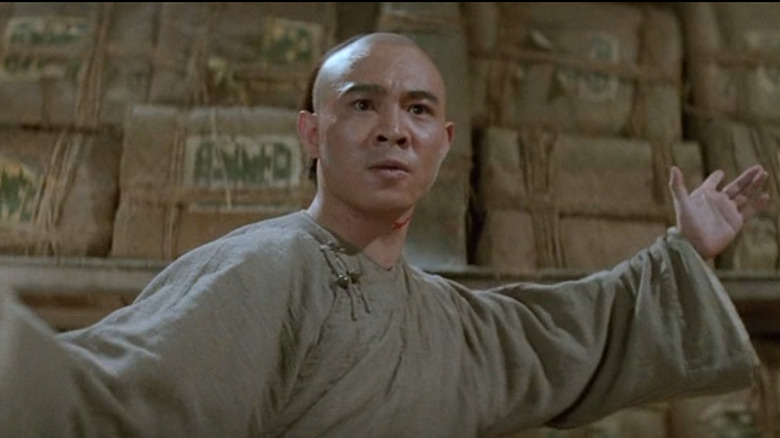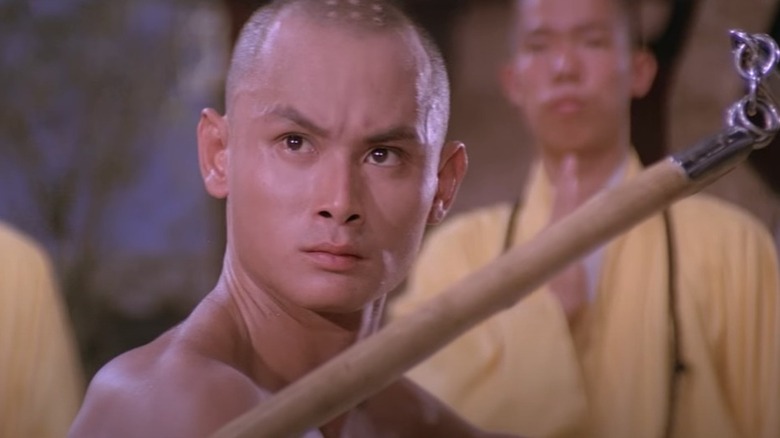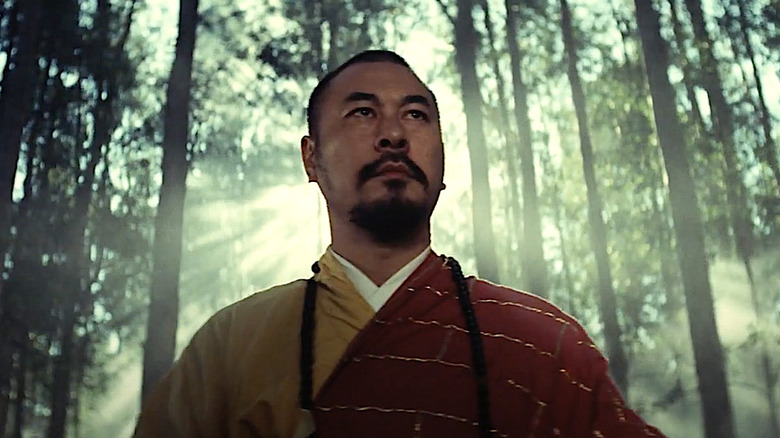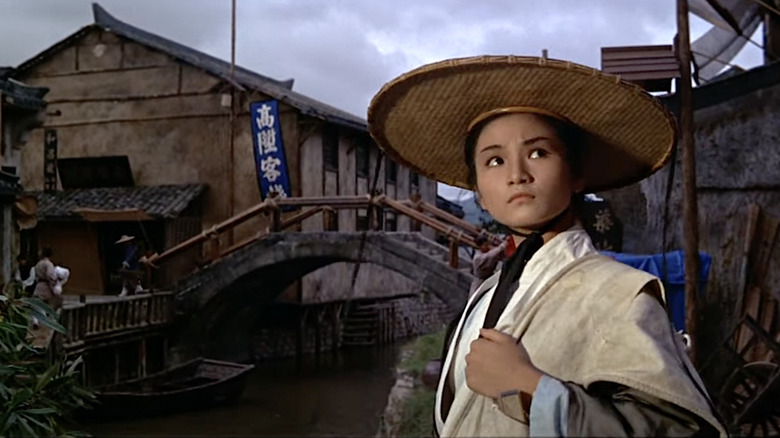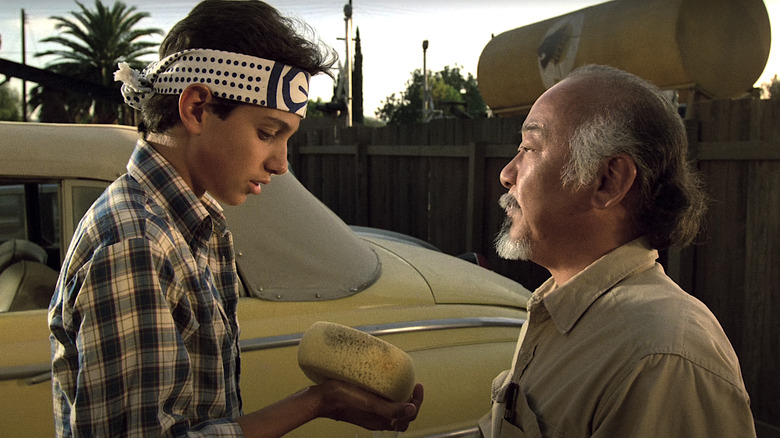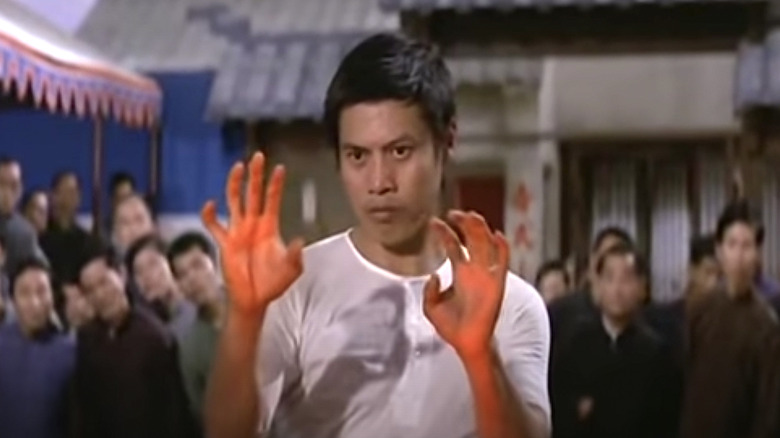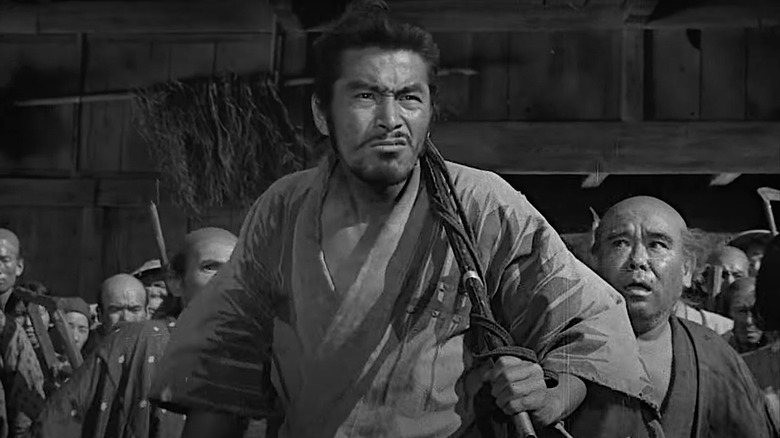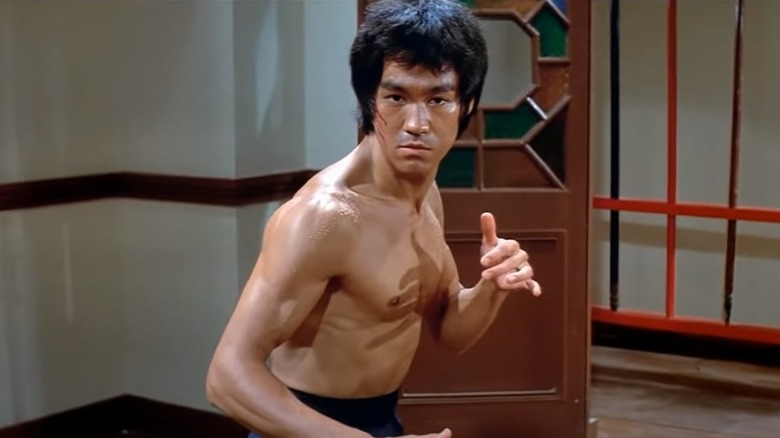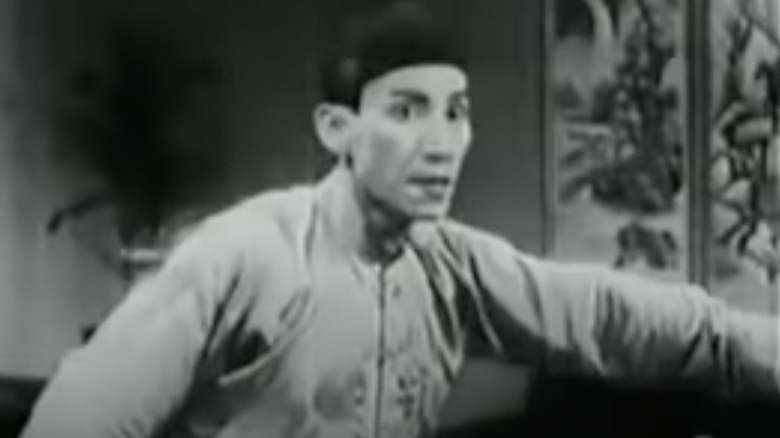The 15 Most Influential Martial Arts Movies Of All Time
Martial arts in movies can mostly be traced to Chinese kung fu movies. This Far Eastern genre originated in the theatricality of Chinese opera and "Wuxia" novels. Wuxia is a romantic genre of Chinese folklore, often featuring a lone sword-wielding hero on a chivalric quest. The oldest films in this vein date to the late 1920s, but many are lost.
Shortly after this genre took off, mainland China banned Wuxia for promoting "backwardness and superstition." This censorship would last until the 1980s, but in these middle years, production moved to Hong Kong where martial arts movies flourished in the famous Shaw Brothers studio under directors like King Hu.
It took until the 1970s, when Bruce Lee brought Chinese-style martial arts to Hollywood, for these types of films to gain worldwide recognition. Before that landmark moment, hand-to-hand combat in American films was unconvincing. The knife fight from 1955's "Rebel Without a Cause" is exciting in the context of the story, but it's not exactly a ballet of violence. What kung fu brought to global cinema was the idea that combat could be a thing of beauty, too. These are the most influential martial arts movies of all time.
15. Kickboxer
Jean-Claude Van Damme is action cinema's most photogenic star, and "Kickboxer" is his best film from a pure martial arts perspective. No movie better captures the grace and athleticism of the self-styled "Muscles from Brussels" at his astonishing physical peak. It's a wonderfully cheesy 1980s confection with a synthy soundtrack to match, but this martial arts melodrama also packs a serious slow-mo double punch to the gut.
Van Damme plays Kurt, the little brother of a cocky American kickboxing star (Dennis Alexio) who gets paralyzed in the ring by the vicious Thai boxing villain, Tong Po (Michel Qissi). Kurt seeks out a reclusive Thai master (Dennis Chan) to help him avenge his brother. The stakes are ratcheted up when gangsters assault his lover (Rochelle Ashana) and kidnap his brother. The final fight sequence has even more impact, as it's intercut with a rescue mission.
If that all sounds like too much, it is, in the best '80s way possible. As Kurt faces down Tong Po in "the old way," the two combatants famously dip their gloves in resin and broken glass. This is pure Hollywood, but "Kickboxer" was the first film to bring genuine Thai boxing to American audiences. The brutal but simple style would later become central to real MMA strategy. Van Damme may topple Tong Po with flying movie kicks, but he also showed the world the superiority of the real fighters to Wuxia fantasies.
14. Kill Bill
Many respectable lists rank Quentin Tarantino's two-part epic "Kill Bill" as the best kung fu movie of all time. There was certainly no bigger fan of the genre working in Hollywood from the 90s through the 2020s. Just as Tarantino brought his love blaxploitation to a wider audience with the underrated "Jackie Brown" in 1997, "Kill Bill" presents an understanding of the martial arts genre only a true cinephile could produce.
The plot of "Kill Bill" is classic Wuxia. This revenge tale follows Uma Thurman's "The Bride" on her quest to track down her ex-boyfriend (David Caradine). Caradine is excellent as an assassin kingpin who interrupts The Bride's wedding and slaughters everyone in the chapel, leaving her for dead. Thurman's fight scene with a Chinese-American samurai gangster played by Lucy Liu is the most sublime six minutes of artful violence ever committed to celluloid.
Besides direct Wuxia references, like the appearance of Chinese folk anti-hero Pai Mei, "Kill Bill" also mixes inspiration from Japanese sword-fighting films like "Shogun Assassin," "Dora-Heita," and even the feudal majesty of "Seven Samurai." The samurai sword is an object of deep reverence in "Kill Bill." It's the only thing the story's various murderous assassins agree deserves respect. The blade is a stand-in for the martial arts genre in Tarantino's capable hands. It's an anachronistic cultural relic but still bloody effective in the hands of a true master.
13. Bloodsport
"BloodSport" has long been basic cable's favorite martial arts movie. The low-key "Kickboxer" is the better Jean-Claude Van Damme film, but "Bloodsport" is where American audiences first got an eyeful of cinema's greatest-ever high-flying kicker.
Based on the supposedly true story of Frank Dux, "Bloodsport" follows the exploits of an ex-commando who enters an Asian "Kumite" tournament and defeats all comers. For years, the real Dux had been telling his students at his Woodland Hills, California, dojo tales of his 1970s glory days as a wandering commando-ninja
When the film debuted in 1988, Dux's stories were branded a "macho fantasy." Dux claimed to have conducted covert military missions in Southeast Asia and even to have been awarded the Medal of Honor — in secret, of course. He once supposedly battled Philippine pirates to rescue a ship full of orphans. That's why he doesn't have the sword from winning the very real Kumite tournament. You see, he sold it to free those poor orphans! His military records tell a different story. Dux "never ventured closer to Southeast Asia than San Diego," notes the Los Angeles Times. So maybe this California gym owner fibbed to boost his dojo's cred during the karate craze of the 1980s. Martial arts films began with heroic legends surrounding local fighters. Dux's tall tales are different only by being recent enough to fact check.
12. The Matrix
The elaborate hand-to-hand combat scenes in "The Matrix" are pure Hong Kong cinema. The original 1999 film's wirework, known as "wire-fu," is what allowed Keanu Reeves to catapult off that dojo wall and briefly get the drop on Lawrence Fishburne. "The Matrix" was the biggest film to ever bring high-flying Wuxia flair to a big-budget American action blockbuster and did so with classic Eastern flair. Wuxia lore always featured romantic figures like Neo whose mastery of fighting craft gave them superhuman powers.
As futuristic as is the premise of "The Matrix," it's the film that finally created a plausible playground for the physics-defying style of wire-fu. If Wuxia influences had been more present in American martial arts movies in 1999, the film's stunts wouldn't have seemed so revolutionary because many were not. Still, no film franchise has brought more eyes to these balletic cinematic traditions. Even though the sequels have left the franchise in disrepair, the original "The Matrix" assured that the martial arts genre would be viable for decades to come.
11. Police Story
After Bruce Lee died in 1973, Hong Kong cinema pegged Jackie Chan as Lee's successor, but Chan is a very different kind of performer. His breakout Chinese film, 1978's "Drunken Master," brought a light-heartedness to the self-serious Wuxia genre full of temples and grand standoffs. Wuxia classics are downright cheesy by modern standards, and Chan's simple adjustment was to make fights feel real by admitting they hurt. He often shakes out his hand and cringes after landing a good punch. And the pain is often all too real. Chan is also arguably the greatest stuntman in cinema history, suffering a litany of horrifying on-set injuries that would send most mere mortals to the morgue.
Like Lee's initial disappointing Hollywood run that brought him back to Hong Kong for "Enter the Dragon," Chan also made an aborted stateside offensive. He returned to China in 1985 with an American flop on his back but took matters into his own hands and co-wrote and directed "Police Story." The action-packed story about a cop who gets framed and must clear his name is a scathing critique of Hollywood's lumbering and clunky fight scenes of the era.
"Police Story" was a smash in China and spawned multiple squeals that eventually landed Chan another crack at Hollywood distribution for his massive American breakout, "Rumble in the Bronx," in 1995. Without "Police Story" there is no behemoth "Rush Hour" franchise.
10. Crouching Tiger, Hidden Dragon
Released in 2000, Ang Lee's "Crouching Tiger, Hidden Dragon" is the greatest Wuxia film ever made. Like "Enter the Dragon," this masterpiece is a collaboration between American and Chinese studios. It's also the highest-grossing foreign film to hit American theaters of all time — and by a massive margin. The film took home four Oscars in 2001, including best cinematography for Peter Tau's breathtaking camera work, capturing the pastoral beauty of numerous Chinese provinces.
The film's plot is both unusually sweeping and highly romantic for a martial arts film. It begins with a legendary warrior in feudal China, Li Mu Bai (Chow Yun-fat), who wants to walk away from his long life of violence. But when he retires his iconic Green Destiny sword, a precocious female warrior (Zhang Ziyi) steals the blade. She and Bai duel but eventually form a bond as they team up against a villain (Cheng Pei-pei) who murdered Bai's master.
The action sequences of "Crouching Tiger, Hidden Dragon" are among the most spectacular ever put on film and reintroduced the wonders of wire-fu stunt work to a global audience. Lee's film is a peak achievement of martial arts cinema, and it requires no particular interest in action movies to embrace this beautiful film's poetic power.
9. Once Upon A Time in China
If Jackie Chan was the successor to Bruce Lee, next in the lineage of Chinese martial arts stars is the great master of blinding kung fu fistics, Jet Li. In 1991's "Once Upon A Time in China," Li plays the Chinese folk hero Wong Fei-hung. The character is a bit like an eastern version of Robin Hood or King Arthur and was previously portrayed in Chan's legendary Hong Kong hit, "Drunken Master."
This time, Fei-hung is portrayed as a Hong Kong healer circa 1900 as the British cede the city to sovereign rule. Fei-hung must fight to protect his martial arts school from cartoonishly sinister colonizers and allied local baddies as he falls for a distant relative (Rosamund Kwan) who's full of Western gusto after returning home from England.
Jet Li is half martial artist, half gymnast, and it's incredible to see him tumble, twist, and climb through the film that revived Chinese martial arts movies. There are no computer graphics in this early '90s adventure, just a lot of wonderfully staged wire work from choreographer Yuen Wo-ping and Western-educated, Eastern-schooled director, Tsui Hark. Li would go on to make numerous spectacular CG-assisted epics like "Hero" in 2002 and "Fearless" in 2006, but it all flows from this landmark revival of the genre.
8. The 36th Chamber of Shaolin
No one knows what ancient battlefields looked like. Even historians aren't exactly sure what happens when you march thousands of armored troops onto a field and send them clanging into each other. The same is largely true of the mechanics of one-on-one sword fights. Since you can't practice this ancient art at full speed without killing someone, films like "The 36th Chamber of Shaolin" from 1978 have popularized a fanciful style of combat that looks great on camera but probably has minimal historicity. Nevertheless, this over-the-top style is the film's enduring power.
The Hong Kong production has been a meme for decades. A young RZA was so impacted by this story of a Shaolin monk learning kung fu to fight back against an oppressive feudal government that he named his famous debut album "Enter the Wu-Tang (36 Chambers)" after the film.
"The 36th Chamber of Shaolin" is widely considered among the most important kung fu films. It has perhaps the longest training sequence of any martial arts movie and partially inspired Quentin Tarantino's lengthy pedagogy of Uma Thurman's jilted Bride in "Kill Bill Volume 2." Considering this film's vaunted place in the Wuxia canon, all that preparation has paid off.
7. A Touch Of Zen
"A Touch Of Zen" is the Wuxia fantasy that most directly inspired the visuals and spiritual tone of the Oscar-winning "Crouching Tiger, Hidden Dragon" in 2000. This 1971 classic by iconic Chinese director King Hu is also a favorite of kung fu fanboy Quentin Tarantino. Tarantino's private screening of the film for Hollywood powerbrokers led to the subsequent production of "Snowpiercer" — which arguably kicked off the Oscar-winning hot streak of South-Korean filmmaking superstar Bong Joon-ho of "Parasite" fame.
Full of adventure and romance, this classic Wuxia story follows a 14th-century artist who finds himself caught in the middle of a war between feuding dynastic factions. The film's style is notable for its dry humor as balletic monks perform impossibly cool wire-fu athletics. The best scene inspired the incredible bouncing bamboo fight scene in one of the most gorgeous martial arts films ever made 2004's "House of Flying Daggers."
6. Come Drink With Me
Released in 1966, "Come Drink With Me" is a seminal fighting film from the early prime of Hong Kong's martial arts movie-making era. It's also an early example of the badass and beautiful young heroine as martial arts master, a theme common to modern Wuxia-inspired pictures.
When the son of a local governor is kidnapped by bandits, he sends for a mythic swordswoman known as "The Golden Swallow." When a local drunk saves her life, he turns out to be a martial arts master, too, and the pair embark on the blood-soaked rescue mission together.
Golden Swallow is played by the luminous Cheng Pei-pei, who was only 19 years old at the time. The novice actress had a background in dance, including ballet, and went on to star in numerous well-received Wuxia pictures. In 2000 her career came full circle when she was cast to play the villain in the genre-defining global smash her work inspired, "Crouching Tiger, Hidden Dragon."
5. The Karate Kid
Chinese kung fu brought martial arts to world cinema, but it was the Japanese-influenced "The Karate Kid" in 1984 that inspired a generation of older millennials to flock local strip-mall dojos and volunteer to wash the family car on the weekend.
Fatherhood is a key theme of this story about Daniel LaRusso (Ralph Macchio), the latchkey son of a single mom (Randee Heller) who wants to learn Karate to get back at a local gang of bullies. Pat Morita earned an Oscar nomination for his iconic role as Mr. Miyagi, cinema's most sage sensei. Miyagi is the archetypal tough-love dad. He won't simply hand over ancient tactics. "Daniel San," as Miyagi calls him, using a Japanese honorific of mutual respect, must first learn discipline.
Every '80s dad was nodding in quiet appreciation as Miyagi tricks his overeager teen pupil into washing an entire fleet of cars and then painting an endless backyard fence. But when we find these seemingly punitive chores were hidden lessons in ancient martial arts, the reveal is an unforgettable catharsis. We'd all been Miyagi'd. It's a feeling of vindication and triumph that characterizes the best movies about underdogs fighting long odds. The film taps into this feeling repeatedly, right down to the All-Valley Tournament finale, but it's only possible because the movie's laconic father figure makes "The Karate Kid" earn it.
4. Five Fingers of Death
Not to be confused with another Wuxia classic, "Five Deadly Venoms," Korean director Chung Chang-Hwa's "Five Fingers of Death" is the film that brought kung fu to America. It stars lesser-known Chinese actor Lieh Lo and follows a typical Wuxia revenge plot about a gifted fighter overcoming the man who killed his teacher.
This 1972 Shaw Brothers' production is a B movie but blew up via word of mouth when it began screening in New York in 1973. "Five Fingers of Death" wasn't even a hit in China but was picked up for US distribution because Warner Brothers was sinking money into a little film called "Enter the Dragon" that was shooting in Hong Kong and rumored to be a disaster. The American studio simply wanted to market-test kung fu ahead of bringing Bruce Lee to America.
"Blaxploitation" films had previously catered to urban audiences in the early '70s but were waning in popularity. Studios needed something fresh, young, action-packed, and different than Westerns with mostly white stars. It was "Five Fingers of Death" that opened the floodgates of America's kung fu craze.
3. Seven Samurai
The Japanese samurai genre is somewhat adjacent to martial arts movies and has its own sacred canon. Nevertheless, Japan's great sword-and-glory pictures of the 1940s and '50s greatly influenced later fighting films, and no samurai epic is more widely acclaimed than Akira Kurosawa's 1954 masterpiece "Seven Samurai."
The story follows a group of "Ronin" (masterless samurai) who band together and selflessly protect farmers from barbarous marauders. The multi-camera production is very modern for the time, and "Seven Samurai" is largely shot on location in rural Japan, with numerous scenes drenched in dramatic torrents of rainfall that would become a genre staple.
This three-and-a-half-hour epic spawned an American remake with "The Magnificent Seven" in both 1960 and 2016 but influenced films ranging from "The Dirty Dozen" to "Bonnie & Clyde" to "Kill Bill." Kurosawa is Japan's true filmmaking icon, and his archetypal story about a band of righteous rebel underdogs is a must-see for every martial arts connoisseur.
2. Enter the Dragon
Bruce Lee is martial arts cinema's most revered star, and "Enter the Dragon" is the 1973 film that solidified his legend. It was the first joint production by Hong Kong and American movie studios. The result was a global smash that, decades later, still tops many lists of the greatest martial arts movie ever made.
"Enter the Dragon" is certainly Lee's best film, but it's also the last project he completed. Lee died suddenly on July 20, 1973, only six days before the Hong Kong premiere. The official cause of death was brain swelling from an allergic reaction to a prescription paimkiller. Lee was just 32 and a perfect physical specimen, so this explanation never sat well with fans. Many conspiracy theories blossomed, playing on the themes of "Enter the Dragon." The most prominent of these alternate explanations for Lee's death is from the 1993 biopic, "Dragon: The Bruce Lee Story," in which the intensely driven star is depicted as being haunted by waking fever dreams about battling an ancient martial arts demon who crashes the set of his famous last work.
The impact of "Enter the Dragon" goes way beyond film. There are endless legends of Lee's real-world dust-ups and genuine fighting prowess. His fighting theories are still being put to the test in MMA leagues like the UFC, where both real combatants and company heads alike often cite "Enter the Dragon" as a key inspiration.
1. Story of Huang Feihong
"Story of Huang Feihong" isn't fully intact, but it is the oldest martial arts film of which some clips are still extant. Earlier Wuxia films about lone protagonists wandering through a mythical version of China, like "The Burning of the Red Lotus Monastery" and "The Adventures of Fong Sai-Yuk," are lost entirely.
This two-part film is based on a real historical martial arts master whose name is often spelled Wong Fei-hung. Fei-hung was a master of Hung Ga, a fighting style developed by Shaolin monks in southern China. The discipline's artful expressiveness which includes a wide-legged stance and iconic "tiger claw" made it perfect for the movies.
Even though what remains of "Story of Huang Feihong" is in grainy black and white, the film's influence is clear. All the elements of modern martial arts action are there: a single hero fending off multiple attackers in an intricately choreographed ballet of fisticuffs. The film's famous fight scene features a battle that sprawls through multiple levels of a dojo set similar to the iconic clash between The Bride and The Crazy 88 from "Kill Bill." The spinning and flipping of "Kung Fu Panda" or Neo and company in "The Matrix" can be directly traced to the remaining frames of this film.
